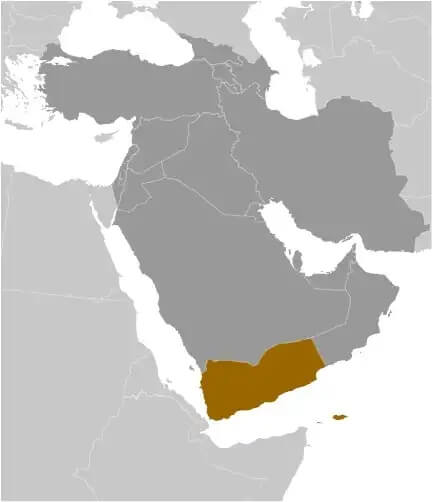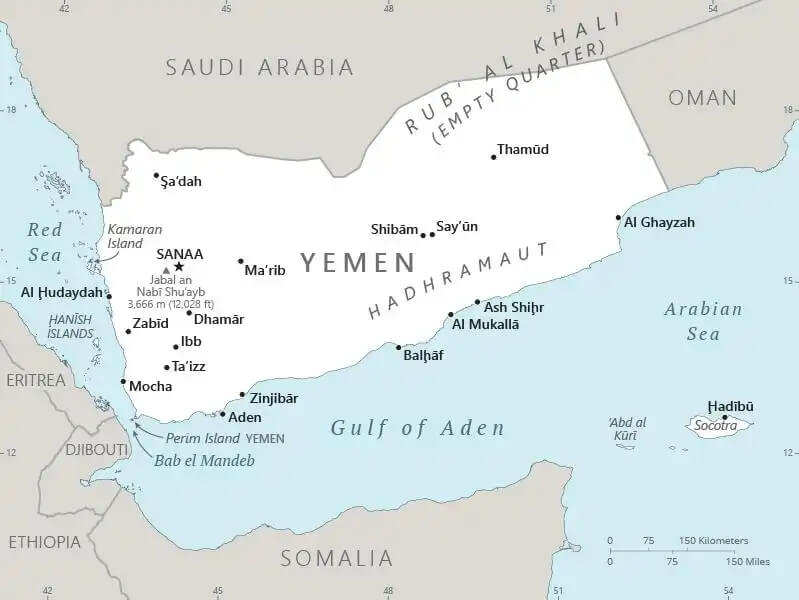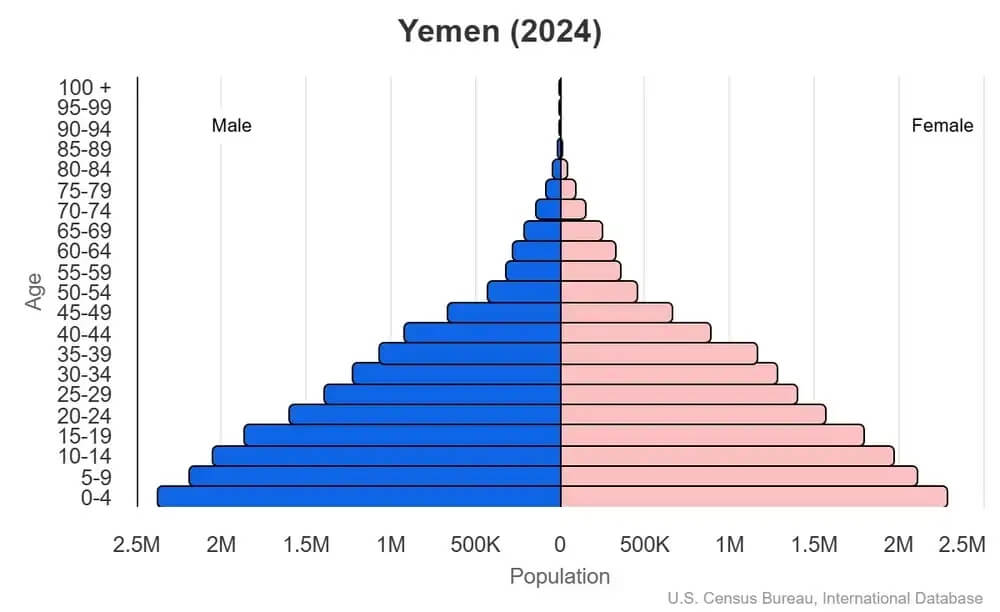World Book
Yemen
World Book Index
41


With a score of 41, the country is ranked 153rd out of 158 countries in the World Book ranking. (more information)
Introduction
Background
The Kingdom of Yemen (colloquially known as North Yemen) became independent from the Ottoman Empire in 1918 and in 1962 became the Yemen Arab Republic. The British withdrew in 1967 from what became the People's Republic of Southern Yemen (colloquially known as South Yemen). The two countries were formally unified as the Republic of Yemen in 1990.
Geography
Area
total : 527,968 sq km
land: 527,968 sq km
water: 0 sq km
Climate
mostly desert; hot and humid along west coast; temperate in western mountains affected by seasonal monsoon; extraordinarily hot, dry, harsh desert in east
Natural resources
petroleum, fish, rock salt, marble; small deposits of coal, gold, lead, nickel, and copper; fertile soil in west
People and Society
Population
total: 32,140,443 (2024 est.)
Ethnic groups
predominantly Arab; but also Afro-Arab, South Asian, European
Languages
Arabic (official)
Religions
Muslim 99.1% (official; virtually all are citizens, an estimated 65% are Sunni and 35% are Shia), other 0.9% (includes Jewish, Baha'i, Hindu, and Christian; many are refugees or temporary foreign residents) (2020 est.)
Population growth rate
1.78% (2024 est.)
Government
Government type
in transition
Capital
name: Sanaa
Executive branch
chief of state: Presidential Leadership Council Chairperson Dr. Rashad Muhammad al-ALIMI (since 19 April 2022)
head of government: Prime Minister Salim Salih BIN BURAYK (since 9 May 2025)
Diplomatic representation in the US
chief of mission: Ambassador Abdulwahab Abdullah Ahmed AL-HAJRI (since 24 July 2025)
Diplomatic representation from the US
chief of mission: Ambassador Steven H. FAGIN (since 1 June 2022); note - the embassy closed in March 2015; Yemen Affairs Unit currently operates out of US Embassy Riyadh
Economy
Economic overview
low-income Middle Eastern economy; infrastructure, trade, and economic institutions devastated by civil war; oil/gas-dependent but decreasing reserves; massive poverty, food insecurity, and unemployment; high inflation
Real GDP (purchasing power parity)
$18.719 billion (2024 est.)
$18.908 billion (2023 est.)
$19.294 billion (2022 est.)
Real GDP per capita
$200 (2024 est.)
$200 (2023 est.)
$300 (2022 est.)
Exports
$384.5 million (2017 est.)
$938.469 million (2016 est.)
$1.867 billion (2015 est.)
Exports - partners
UAE 28%, India 21%, Saudi Arabia 17%, Oman 7%, Malaysia 5% (2023)
Exports - commodities
gold, fish, scrap iron, shellfish, industrial acids/oils/alcohols (2023)
Imports
$4.079 billion (2017 est.)
$8.256 billion (2016 est.)
$7.697 billion (2015 est.)
Imports - partners
China 23%, UAE 15%, Saudi Arabia 11%, Turkey 8%, India 7% (2023)
Imports - commodities
wheat, raw sugar, rice, iron bars, plastic products (2023)
Human Development Index
The country's Human Development Index (HDI) is 0.470, ranking it 184th out of 193 countries tested. (more information)
World Happiness Report
The World Happiness Report ranked the country 148th out of 158 countries tested with a score of 3.502. (more information)



